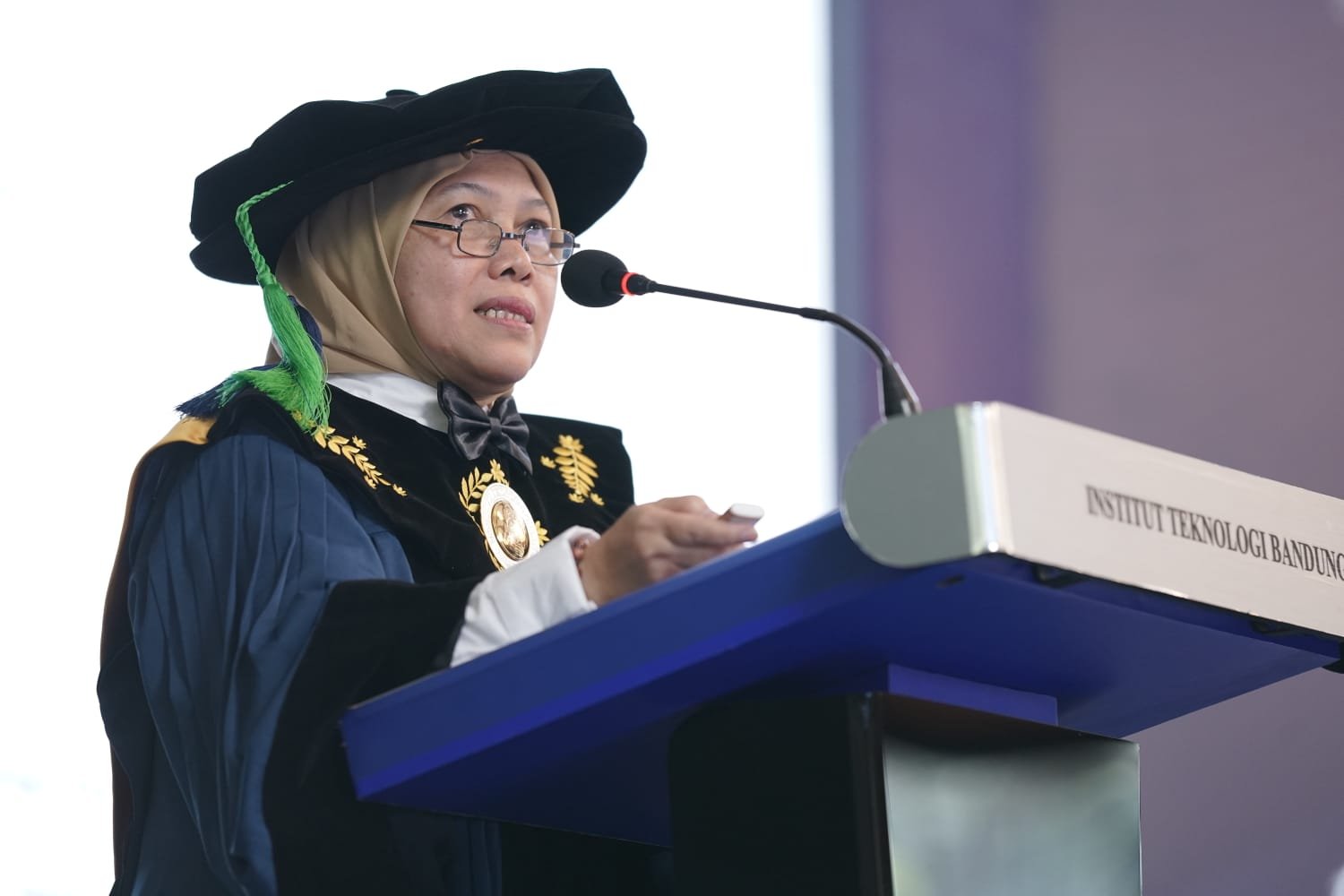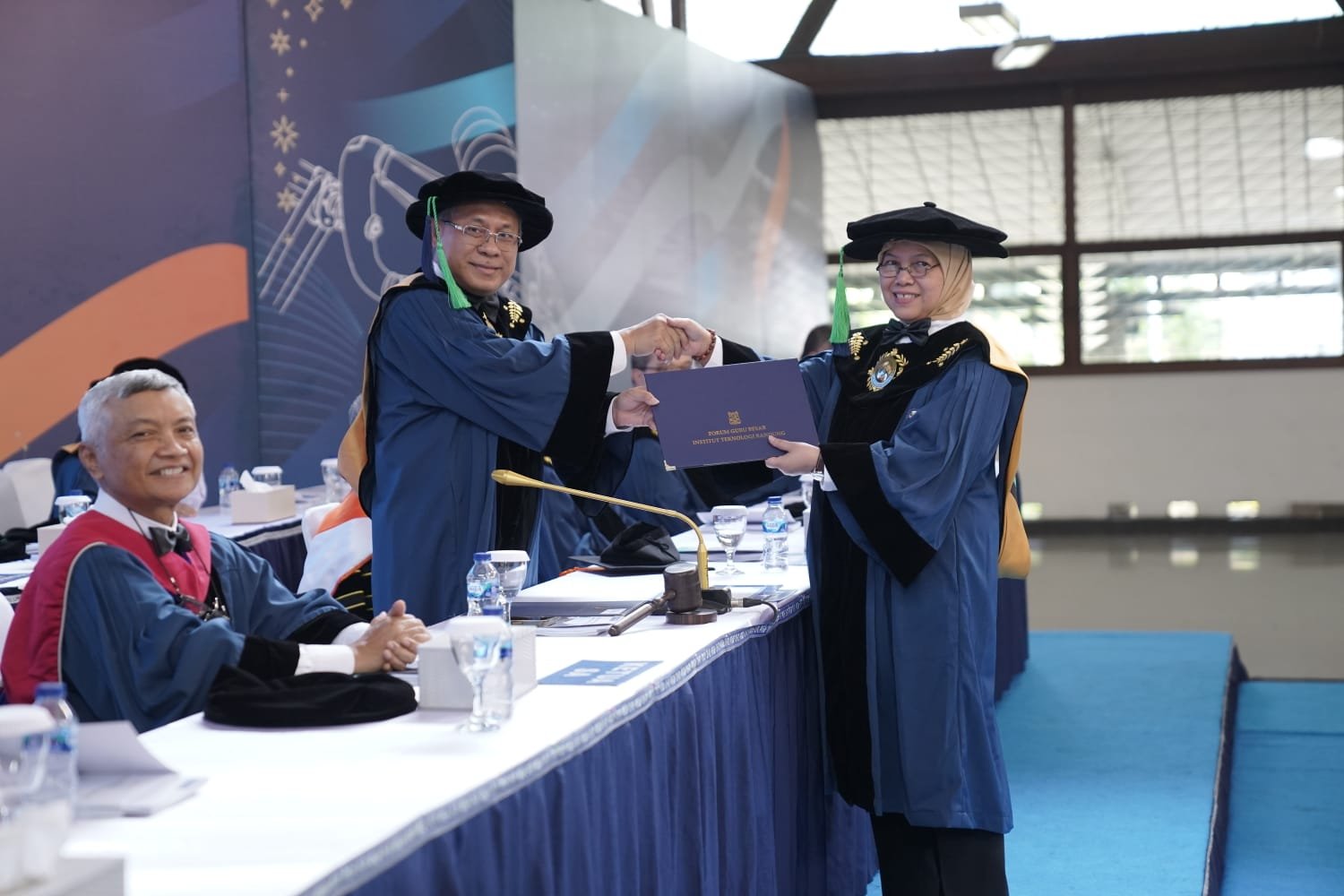Prof. Widayani's Academic Oration: Challenges and Recent Advances in Natural Fiber-based Composites
By Anggun Nindita
Editor Anggun Nindita

BANDUNG, itb.ac.id – Professor Dr. Widayani, M.S., a member of the Nuclear and Biophysics Expertise Group in the Faculty of Mathematics and Natural Sciences (FMNS) at ITB, delivered an academic presentation at the ITB Professorial Forum on Saturday, August 19, 2023. Her presentation, titled "Natural Fiber-based Composites," explored the latest research findings and future developments in this field.
Professor Widayani is a native of Bandung, where she was born and raised. She completed her education, from elementary school to her master's degree, in Bandung. Subsequently, she pursued her doctoral studies in Polymer Science and Technology at the University of Manchester.
Prof. Widayani, an enthusiastic sewing enthusiast, has been a physics lecturer at ITB since 1990 and remains actively engaged in this role. Throughout her professional journey, she has effectively guided over 30 students to the successful completion of their undergraduate, master's, and doctoral degrees. Additionally, she has authored more than 23 academic journals and 20 conference proceedings, with a specific focus on research related to composites and functional polymers.
In the beginning of her presentation, Professor Widayani clarified that composites are a combination of materials on a larger scale. Composites are created by blending various materials of different types. These composite materials exhibit superior properties compared to their individual components.
Composites consist of two main elements: fillers, such as fiber reinforcement, and a matrix that acts as the binding material. Professor Widayani's research centers around Natural Fiber-based Composites (NFC). These composites are produced by combining natural fiber fillers with polymer matrices.
In this context, natural fibers are obtained from various parts of plants, animals, and minerals. Each natural fiber possesses unique characteristics due to differences in their composition. Professor Widayani explained the benefits of developing composites using natural fibers, particularly those derived from plants. These advantages include cost-effectiveness, renewability, environmental friendliness, ample availability, and enhanced economic value. However, natural fiber composites do have certain limitations, including insufficient thermal and water resistance, susceptibility to insects, flammability, and subpar adhesion.
"These limitations present challenges for researchers in finding ways to overcome them. In other words, special treatments must be applied to the fibers before they are used in composites," she stated.
The properties of natural fiber-based composites are influenced by the characteristics of the matrix and fibers, their composition, the manufacturing process, and the interface between the matrix and fibers. Several factors affect the composite properties, including physical, mechanical, thermal, and wave-related properties. Natural fiber-based composites are used in various industries due to their diverse properties. These applications include structural materials, automotive components, biomedical materials, construction materials, furniture, and more.
"The applications of natural fiber-based composites are quite extensive due to their physical characteristics," said Prof. Widayani.

Professor Widayani and her team have conducted multiple studies on the characteristics and properties of composite materials made from natural fibers. The study on the physical properties of pineapple leaf-epoxy composites revealed that the application of pressure influences the morphology of the composite, particularly in terms of pore size. Furthermore, the examination of mechanical properties in different composite fibers has indicated that the elastic modulus is influenced by the composition of the composite.
Thermal property testing of sago fiber-epoxy composites revealed that, at a specific temperature, the composite experiences damage. Initially, the natural fibers are damaged, followed by damage to the matrix. Meanwhile, experiments conducted on wave properties in wood-epoxy composites revealed that the transmitted wave intensity is reduced compared to that of wood or epoxy alone.
To further facilitate research in this field, potential areas of advanced study include green composites and bio-nano composites. Both technologies have significant potential to enhance the quality of composite materials, thereby increasing their usability in various industries.
Reporter: Hanifa Juliana (Urban and Regional Planning, 2020)
Translator: Anggi Nurdiani (Management, 2021)
Editor: Vera C.U.

.jpg)

.jpg)
.jpg)
.jpg)
.jpg)
.jpg)
